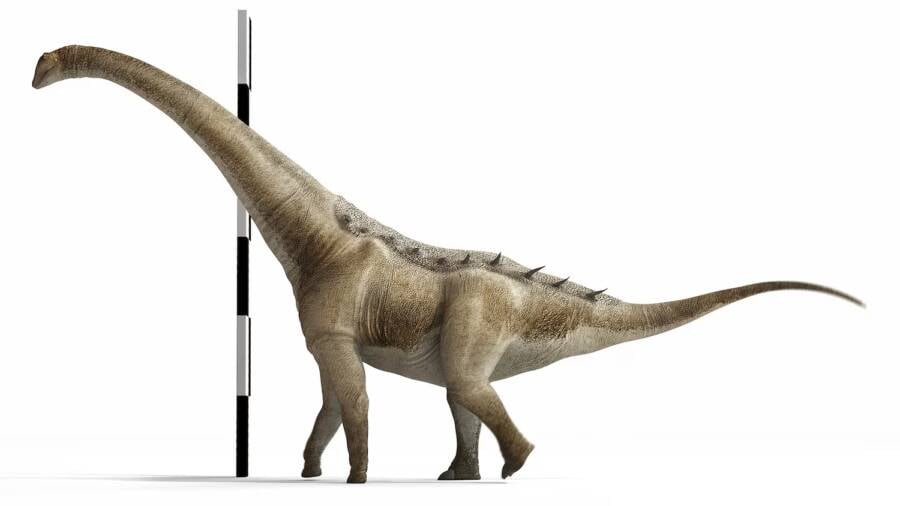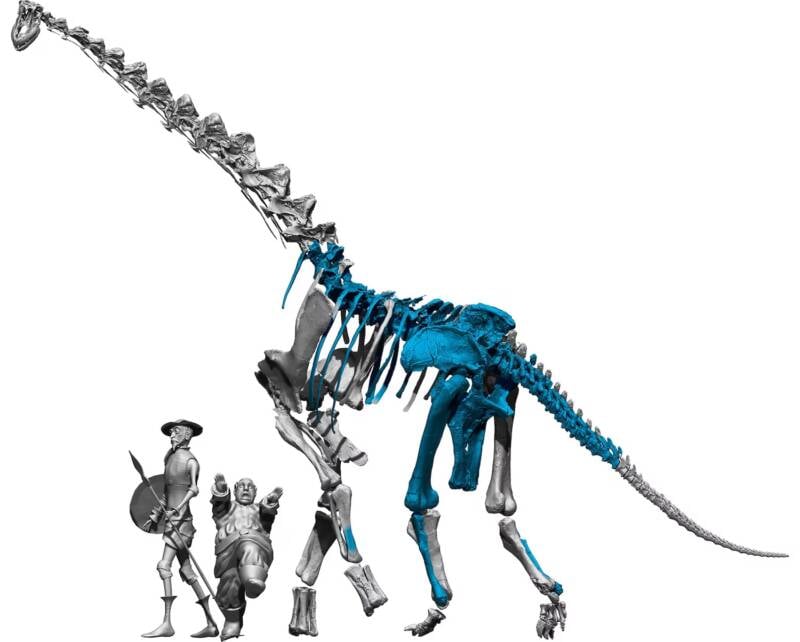Qunkasaura pintiquiniestra lived 73 million years ago, grew to be 65 feet long, and weighed more than 15 tons.

Jose Antonio Penas ArteroAn artist’s rendition of Qunkasaura pintiquiniestra.
More than a decade after paleontologists unearthed a trove of prehistoric skeletons in Spain, researchers have identified a new species of dinosaur — and believe there may be more to come.
Based on their findings, scientists believe this newly identified dinosaur, Qunkasaura pintiquiniestra, represents one of the “last giants” to have roamed Europe before the mass extinction event that occurred 66 million years ago.
Paleontologists Discover Qunkasaura Pintiquiniestra In Spain

Universidad Nacional de Educación a DistanciaPaleontologists excavating Qunkasaura pintiquiniestra at the Lo Huenca fossil site near Cuenca, Spain.
While carrying out excavations near the mountainous Spanish town of Cuenca in preparation for the construction of a high-speed rail line, researchers unearthed a large number of prehistoric skeletons, including dinosaurs, crocodiles, and turtles.
As Pedro Mocho, a paleontologist at the University of Lisboa, told ABC News, the team then spent three months extracting dinosaur skeletons from the Lo Hueco fossil site. Most of these fossils, Mocho said, were sauropods, which were herbivores characterized by their long necks and tails, large bodies, and small heads.
Mocho and his fellow paleontologists estimate that these fossils are around 73 million years old, dating them to the late Cretaceous period. Remarkably, among the unearthed remains was one of the most complete sauropod skeletons ever found in Europe. This skeleton would eventually be identified as Qunkasaura pintiquiniestra.
What Scientists Know About The Newly-Identified Dinosaur

Universidad Nacional de Educación a DistanciaA size comparison of Qunkasaura pintiquiniestra.
After years of studying the Qunkasaura pintiquiniestra fossils, paleontologists just published their research in the journal Communications Biology.
Qunkasaura pintiquiniestra likely grew to be 65 feet long and weighed more than 15 tons. This was rare for dinosaurs found in Europe during the late Cretaceous period.
As Mocho explained, “A lot of dinosaurs are small because they have small areas to live in, so they have a small amount of resources. So, generally, the animals associated to insular environments are relatively small in some cases, and others, the opposite happens.”
The name Qunkasaura pintiquiniestra refers to the nearby town of Cuenca, the painter Antonio Saura, and the character Queen Pintiquiniestra from the 16th-century book Amadis of Greece, which is referenced in the medieval Spanish masterpiece Don Quixote.
So far, researchers have only identified one specimen of Qunkasaura, but they believe the fossilized bones of at least two individuals are present among the remains recovered from the site.
Mocho noted that the area where the rail line passes through has now been cleared of all fossils, but excavations continue in the remainder of the Lo Hueco site. As paleontologists continue to sift through the prehistoric remains, they believe they will be able to identify other Qunkasaura specimens — and potentially more new dinosaur species.
After reading about the discovery of this new dinosaur species, check out these mind-blowing dinosaur facts. Then, read all about the true size of the T. rex.





